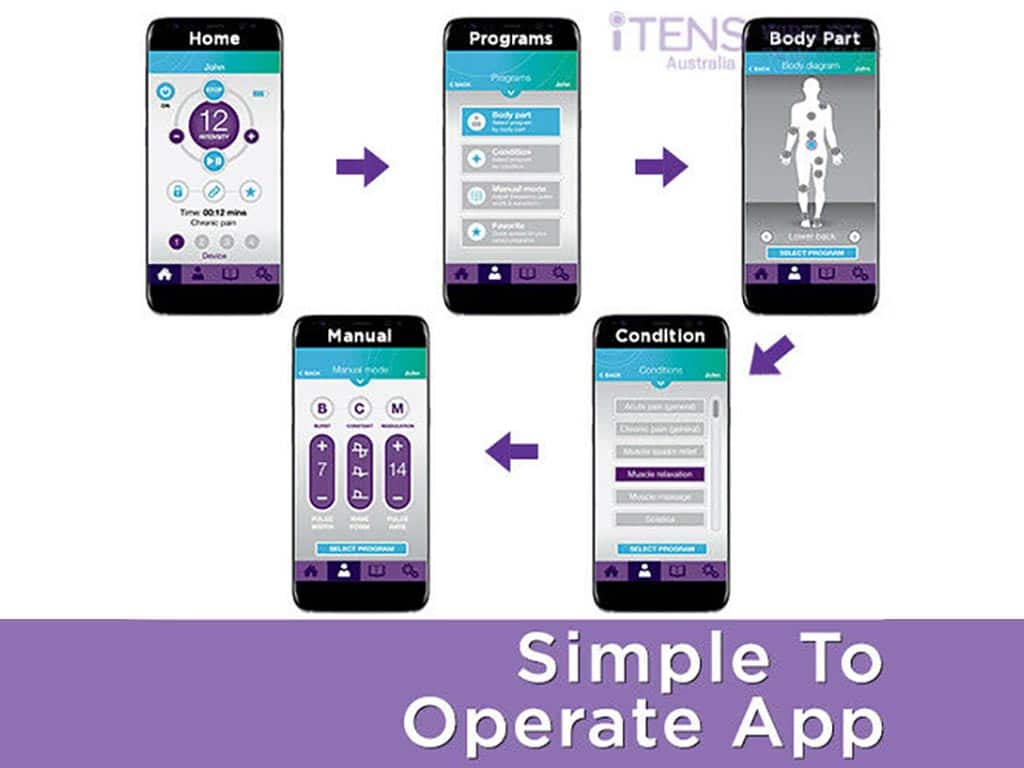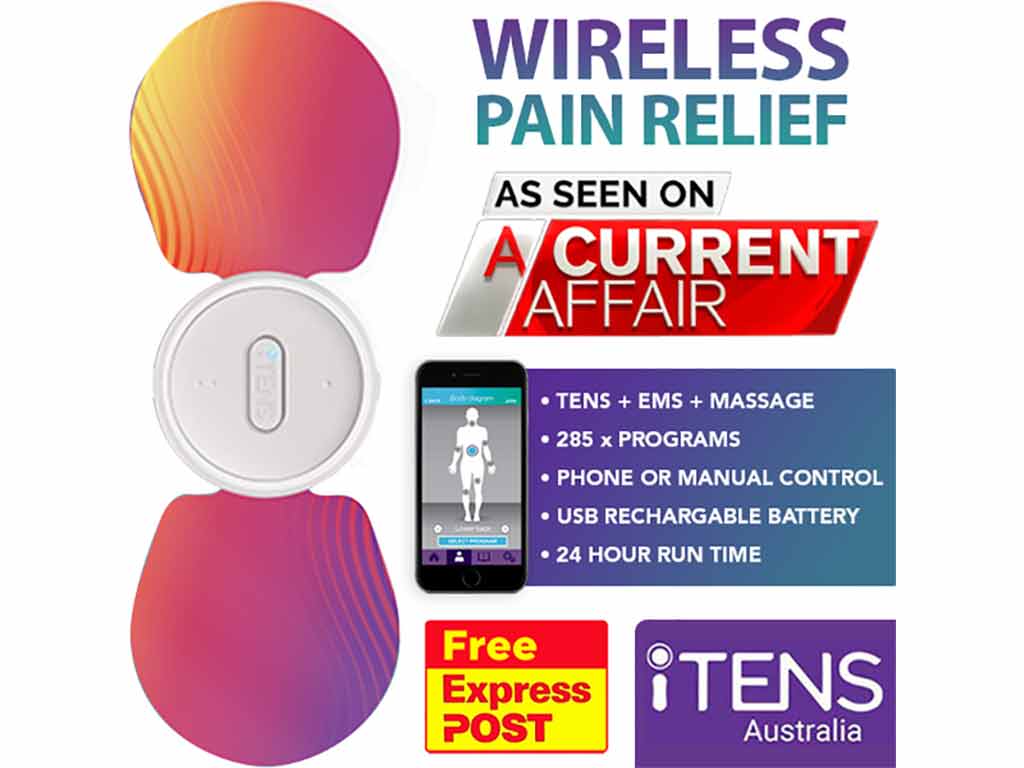
A Transcutaneous Electrical Nerve Stimulation or TENS physical therapy machine may offer pain relief and improve quality of life for a variety of reasons. The electrical currents from TENS can block the transmission of pain signals to the brain. They can also prompt the release of endorphins and improve blood circulation. Additionally, TENS therapy provides numerous benefits. It is non-invasive, drug-free, customisable, cost-effective, and can be an adjunct treatment.
Various types of pain impact a significant number of individuals globally. This can impact both physical and mental health. Traditional pain management methods, such as pain control medications, may have accompanying side effects or may not always offer relief. Due to this, people are looking for different methods of pain relief to help ease their discomfort and enhance their quality of life. This article will present TENS therapy, including its mechanism of action, proper usage, and safety considerations.
How a TENS Physical Therapy Machine Works to Provide Relief
A TENS physical therapy machine can improve the quality of life through several central mechanisms. Foremost, when a TENS device is used, the electrical stimulation triggers the release of endorphins. These are the natural pain-relieving chemicals of the body that bind to opioid receptors. Nevertheless, these endorphins can improve mood and overall well-being.
Secondly, TENS therapy operates based on the pain gate mechanisms. When a TENS unit delivers electrical impulses to the body, it can interfere with the transmission of pain messages. It essentially closes the “gate” in the spinal cord to prevent pain signals from reaching the brain. As a result, an individual experiences a reduction of pain and a level of pain relief.
Moreover, TENS treatment can enhance blood flow in the treatment region. Improved blood circulation can promote healing by delivering oxygen and nutrients to biological and body tissues. Also, it removes waste products and reduces inflammation. Additionally, the electrical pulses can stream in low and high frequencies, contributing to the effectiveness of TENS.
What Can It Treat?
- Acute pain conditions: lasts for a short time and may result from postoperative pain, period pain, labour pain, tension headaches, and sports injuries.
- Musculoskeletal pain: it involves the muscles, bones, ligaments, tendons, and nerves. TENS therapy is valuable for managing ailments like knee joint or osteoarthritis pain.
- Chronic pain conditions: long-lasting and can result from conditions such as arthritis pain, fibromyalgia, neck, and backaches.
- Muscular discomfort: this can result from overexertion, tension, or poor posture.
- Neuropathic pain: caused by damage or dysfunction of the nervous system. TENS is beneficial for treating conditions like sciatica and diabetic neuropathy.

How to Operate a TENS Physical Therapy Machine
Operating a TENS physical therapy machine involves several simple steps. Firstly, it is crucial to identify the area of the body experiencing discomfort. Next, connect the sets of electrodes to the central machine via wires or to a smartphone via Bluetooth for wireless. It is essential to use the appropriate size and number of electrode patches.
Once the electrodes are ready, position them on the skin above the treatment area. Adhering to the proper electrode placement is essential in this step. Also, avoid placing the pads on the head, eyes, mouth, throat, chest, bony regions, and broken skin. Once the electrodes are in place, turn on the TENS unit. This may involve adjusting the settings or choosing a pre-set program.
Professionals advise beginning at the lowest setting and adjusting gradually to a level that feels comfortable. Throughout the TENS therapy, remain aware of any sensations that may arise. The duration of the treatment may last 15 to 30 minutes. After the TENS therapy session is complete, turn off the device and carefully remove the electrode patches from the skin.
Pad Placement
Proper electrode placement is crucial for effective relief. Firstly, the individual should identify the specific area of the body experiencing discomfort. Secondly, the person should thoroughly clean the treatment area. Hence, remove any oil, lotions, or dirt that may hinder the adhesion of electrode pads. Then, select the appropriate size and shape of pads for the targeted area.
If the pain is along a nerve pathway, vertically position the pads on either side of the painful area. Nevertheless, it is important to maintain an adequate distance between the electrode pads. Individuals also may refer to the placement chart that may come with the device.

Safety Considerations When Using a TENS Physical Therapy Machine
When using a TENS physical therapy machine, it is essential to follow safety guidelines. Before utilising the medical device, individuals should consult with a healthcare provider. This is particularly essential for people with underlying medical conditions. In addition, it is vital to clean and dry the skin to optimise the conduction of electrical pulses.
Proper electrode placement is essential for the safe and effective utilisation of TENS. Hence, users should follow the guidance provided by health professionals or the user manual. Also, do not position the electrodes on the head, eyes, mouth, throat, chest, bony prominences, and broken skin. When initiating TENS therapy, start with a low setting and gradually increase it to a comfortable intensity.
Individuals should pay attention to the sensations they experience during the treatment. While a mild tingling or tapping sensation is normal, any uncomfortable sensations should prompt an action. Moreover, adhering to advisable time limitations is necessary for TENS therapy sessions to prevent overuse. Additionally, do not use TENS while driving, operating machinery, or in contact with water.
Potential Side Effects
There are potential side effects associated with nerve stimulators, and these can vary from person to person. For instance, skin irritation. Some people may experience redness, itching, or a rash at the application site. The issue may arise from either the adhesive materials of the electrodes or a reaction to the electrical current.
In some cases, temporary muscle spasms may occur in the treatment area. This may cause discomfort but is generally not harmful. Adjusting the settings or repositioning the electrodes may help. Overall, it is essential to be aware of these potential side effects and consult a healthcare professional if any concerns arise.
Conclusion
In conclusion, a TENS physical therapy machine works by triggering the release of endorphins, interfering with pain signals, and improving blood circulation. To operate it, one must clean the skin, connect electrodes, position them correctly, adjust settings, and monitor sensations. Starting at the lowest setting and gradually increasing is advisable. Treatment typically lasts 15 to 30 minutes. Afterwards, the TENS therapy device should be turned off, and electrodes removed carefully.
When using a TENS machine, individuals must prioritise safety by consulting healthcare providers, ensuring proper electrode placement, and monitoring sensations during treatment. Adhering to recommended guidelines and being aware of potential side effects such as skin irritation or muscle spasms is crucial. By following these precautions, users can effectively utilise TENS therapy for pain relief and rehabilitation while minimising risks. Individuals interested in wireless TENS devices may check iTENS Australia.




















